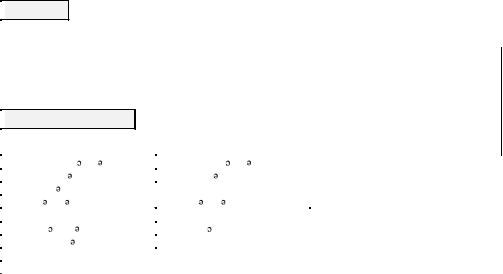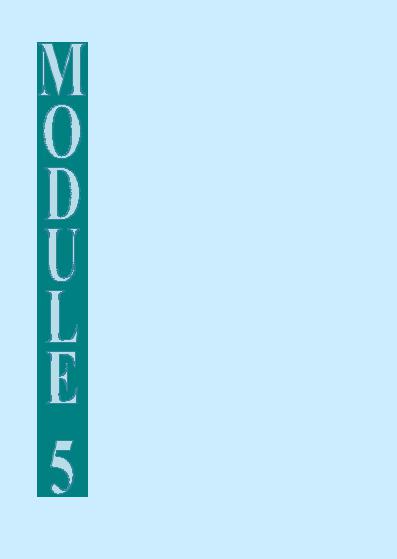
Learning to learn in English
.pdf
Tool box |
|
|
to develop treatment for |
to produce evidence |
to recognize work |
to cure diseases |
to carry out research |
to receive waves |
to measure temperature |
to be honoured for |
to confirm an idea |
to perform experiments with |
to show pictures of |
to give support |
to launch a satellite |
to control genes |
to open up an area |
|
|
to solve a mystery |
|
|
|
 Get real
Get real
Search the Internet or popular science magazines. Find information about national and international awards in your field of science. Report back your findings to the class.

 Reading
Reading
1. Look at the words below and say which field(s) of science they refer to:
polythene |
molecule |
pressure |
plastic |
explosive |
atom |
compound |
benzaldehyde |
waxy solid |
ethylene |
|
|
2.What do you know about polythene and its uses in our everyday life?
3.You are going to read a part of an interview with Anthony Willbourn about the discovery of polythene.As you read mark the statements below T for ‘true’ or F for ‘false’. Correct the false ones.
a)Anthony Willbourn is a journalist. ( )
b)He waslucky to meet and talk to people that discovered polythene. ( )
c)A team of researchers discovered polythene in 1939. ( )
d)The researchers were investigating the phenomena at high pressures. ( )
e)Their discovery was made by accident. ( )
f)The experiments were carried out in a well-equipped laboratory. ( )
g)Scientists failed to find practical applicationsof polythene at that time. ( )
h)The substance was launched into mass production the month after the war broke out. ( )
i) Radarshelpedthe Britishaircraft, RAF, tocontainLuftwaffe attacks. ( )
“My name isAnthonyWillbournand Iama chemist. Iwas reallyfortunate to be able to meet and talk to the discoverers of polythene because many plastics, as they were developed, didn’t have individuals you could point to and say, he or she wasa discoverer. The discovery was made in 1933 by two men – Gibson and the other one was Eric Forsett, and he was trained as an organic chemist, and they were working in the field of the study of phenomena at high pressures.
They had no idea what they were going to find. And certainly didn’t plan tomakeplastic.Infact,theywere tryingto react,at thatverymoment, ethylene with benzaldehyde, to make a very ordinary sort of compound, ethyl phenyl ketone. But they didn’t make it. They made by accident a white, waxy solid, and the other problem was that, when they tried to repeat these experiments, they didn’t produce anything at all. They had explosions, because the gases decomposed explosively. And all this was being done in an open laboratory, which today would be unthinkable, because the pressures were up at about two thousand atmospheres. And they reacted at about 180 degrees centigrade.
And finally they had produced a few grams of this white waxy solid, because it was interesting of course, they had to stop the work because it was too dangerous, and they had to wait until a special building had been completed, into which they could put this equipment and work safely.
What was basically remarkable wasthat they made something they didn’t expect to make. Nobody knew that you could join together these atomic components and produce molecules of such enormous lengths, which gave it not only good solid state properties, but a sort of toughness that made it possible to make cable covering, and to make films and so on.
The first plant which had a capacity of only making pounds per day came into operation in September 1939, the day the war broke out.And that was very significant, because within several months it became clear that polythene was the ideal material for making radar and using it from aircraft, which had been impossible before polythene became available. The RAF, which was of course heavily outnumbered by the Luftwaffe, couldn’t stay in the air long enough to find the enemy and engage them without some help. And radar provided that essential help that made it possible for the RAF to contain the attacks of the enemy.
Soofcourse polythene had atremendouspractical effectonthe war effort.”
(Abridged and adapted from http://www.bbc.co.uk/worldservice/people/features/ mycentury/transcript/wk37d2.shtml)
120 |
121 |

What do you think?
Name the most outstanding discoveries or inventions in your subject area. What are their strong and weak points?
Name the most outstanding scientistsofthe 20th centuryinyour subject area. What were their contributions?
What Nobel Prize winners from Russia or the former Soviet Union do
you know? What fields of science did they work in?

 Writing
Writing
Think of any discovery or invention made in your field of science in the 20th century. Which do you think has been of major importance for the advance of science and technological development?
Write a paragraph of about 100–150 words and give reasons for your choice of the discovery or invention.

 In the Realm of Science
In the Realm of Science
1. Learn how to say the singular and plural nouns.
phenomenon [fi n min n] |
phenomena [fi n min ] |
medium [ mi:di m] |
media [ mi:di ] |
radius [ reidj s] |
radii [ reidiai] |
analysis [ næl sis] |
analyses [ næl si:z] |
crisis [ kraisis] |
crises [ kraisi:z] |
formula [ f :mjul ] |
formulae [ f :mjuli:] |
nucleus [ nju:kli s] |
nuclei [ nju:kliai] |
axis [ æksis] |
axes [ æksi:z] |
index [ indeks] |
indices [ indisi:z] |
2.Prefix, stem and suffix are three parts of a word. It is possible to guess the meaning of the word if you know the meaning of the prefix or suffix. Refer the prefixes below to the categories.
Size Location
Time and order
Number
Other
trans- |
multy- |
peri- |
mega- |
semi- |
bi- |
dec- |
micro- |
auto |
pre- |
mini- |
mono- |
super- |
post |
inter- |
tri- |
oct- |
tele- |
sub- |
extra- |
hydro- |
photo- |
aero- |
co- |
fore- |
3.Match each word that has a prefix in column A with the right meaning of the prefix in column B. Translate the words into your native language.
A |
|
B |
1) |
semiconductor |
a) under |
2) |
extraordinary |
c) two |
3) |
monologue |
d) first |
4) |
transmission |
e) very small |
5) |
submarine |
f) half, partly |
6) |
bilingual |
g) beyond |
7) |
microchip |
h) across |
8) |
primitive |
i) one |
4. Read and remember the prefixes that show various sizes.
Number |
Prefix |
Symbol |
10 1 |
deka- |
da |
10 2 |
hecto- |
h |
10 3 |
kilo- |
k |
10 6 |
mega- |
M |
10 9 |
giga- |
G |
10 12 |
tera- |
T |
10 15 |
peta- |
P |
10 18 |
exa- |
E |
10 21 |
zeta- |
Z |
10 24 |
yotta- |
Y |
Number Prefix |
Symbol |
||
10 |
-1 |
deci- |
d |
10 |
-2 |
centi- |
c |
10 |
-3 |
milli- |
m |
10 |
-6 |
micro- |
(Greek mu) |
10 |
-9 |
nano- |
n |
10 |
-12 |
pico- |
p |
10 |
-15 |
femto- |
f |
10 |
-18 |
atto- |
a |
10 |
-21 |
zepto- |
z |
10 |
-24 |
yocto- |
y |
122 |
123 |

Unit 2 Progress Monitoring
In this unit you have worked on the vocabulary related to the topic “Evolution of the
natural sciences” |
|
|
to make a breakthrough |
|
dramatically; essentially; profoundly |
to play a key role in the advancement |
|
scientist; philosopher; explorer; inventor; |
of modern electronic devices |
|
discoverer |
to have tremendous/great/practical |
|
to show positive/negative potential |
effect on sth |
|
deep insights into the nature of sth |
to have an impact on sth |
|
to be of the greatest benefit to |
to provide a way to do sth |
|
mankind |
to open a new frontier |
|
to experiment with different |
tocreateprinciples/tremendousenergy |
|
techniques |
to redefine sth |
to be awarded/to receive the Nobel |
|
|
|
prize |
Tick(V) thepoints you areconfidentaboutand cross(X) theonesyouneed to revise.
Unit 3 |
Revise & Practise |
|
|
1. Explain the difference between the words. |
|||
to invent |
|
– |
to patent |
experiment |
|
– |
observation |
to be nominated for a prize |
– |
to be awarded a prize |
|
technology |
|
– |
technique |
award |
|
– |
reward |
2.Work in groups. Think of 3 words with each prefix from the list below. Example: bicycle, extraordinary, decimal, etc.
1) |
tele- |
6) mono- |
11) semi- |
||
2) |
aero- |
7) bi- |
12) |
multi- |
|
3) photo- |
8) |
super- |
13) |
dec- |
|
4) |
micro- |
9) |
extra- |
14) |
trans- |
5) auto- |
10) hydro- |
|
|
||
3.Read these sayings. Comment on the one you like most.
“Discovery consists of seeing what everybody has seen and thinking what nobody else has thought”. Albert Szent-Gyorgyi
“Accident is the name of the greatest of all inventors”. Mark Twain
“The experimenter who does not know what he is looking for will not understand what he finds”. Claude Bernard
“No great discovery was ever made without a bold guess”. Sir Isaac Newton
4.Work on your own. Make a list of 10 international and ‘false friends’ words. Ask your fellow student to sort them out.
5.Divide into 5 teams. Each team completes mind maps for the words: experiment, accomplishment, development, laboratory and technology.
Check your results as a class.
Progress Test
1. Usethe wordinblockstoformoneword that fitsinthe gap inthesentence.
124 |
125 |
a) |
The ………….. of the transistor made personal |
INVENT |
|
computers possible. |
|
b) |
Any ………….. data should be confirmed |
THEORY |
|
experimentally. |
|
c) |
I’ve always wanted to be a ………….. . |
SCIENCE |
d) |
The ………….. of these huge ice sheets must |
DEVELOP |
|
have led to the destruction of all organic life at |
|
|
the Earth’s surface. |
|
e) |
What ………….. reaction is going on now? |
CHEMISTRY |
f) |
Hubble’s brilliant ………….. was that the red |
OBSERVE |
|
shift of galaxies was directly proportional to the |
|
|
distance of the galaxy from earth. |
|
g) |
Nicolai Lobachevsky wasagreatRussian……..… |
MATHEMATICS |
|
………….. . |
|
h) |
Livingstone was the first European to make an |
EXPLORE |
|
………….. of the Zambezi river. |
|
i) |
I’m afraid this device isn’t accurate enough to do |
MEASURE |
|
all necessary ………….. . |
|
j) |
The ………….. of America forms the beginning |
DISCOVER |
|
of a new period, both in modern history and in |
|
|
modern geography. |
|
k) |
I’m sure this new digital device will find |
APPLY |
|
widespread ………….. . |
|
l) |
Their greatest ………….. was the discovery of |
ACCOMPLISH |
|
DNA. |
|
m) |
The product of two numbers is called ……….. . |
MULTIPLY |
n)He was awarded the Nobel Prize for ……….. INVESTIGATE Black Holes.
2.See how quickly you can find the answer to this rather long sum.
Four add two, divide by three, subtract one, multiply by eight, take away four, times three, plus two, minus four, halved, equals what?
3.Complete the paragraph with the appropriate past tense form of the verbs in brackets.
Peter ………….. (get) into a lot of trouble a couple of days ago when he
………….. (have) his chemistry lab class. While the teacher …………..
(explain) the procedure of the experiment he ………….. (look) out of the window and ………….. (daydream). When students ………….. . (start) heating the substanceshe by mistake ………….. (take) the wrong test tube. He ………….. (be frightened) nearly to death to see the substance going out of the tube and splitting on the desk and his clothes. The teacher
………….. (be) very angry with him, though he ………….. (be) glad Peter ………….. (remember) to wear safety glasses before starting the experiment. Anyway, Peter’s lab work ………….. (be) a complete failure.
4.Read students’ jokes about the laboratory work. Decide which answer A, B or C best fits each space. With your partner compare the resultsof this activity.
Example: (0) A
Rules of the Lab
If an (0) experiment works, something has gone wrong.
When you don’t know what you’re doing, do it (1) ………….. . Experiments must be (2) ………, they should fail the same way each time. First (3) ………….. your curves, then plot your (4) ………….. .
(5) ………….. is directly proportional to (6) ………….. ruined. Always keep a (7) ………….. of your data. It indicates that you have been working.
To do a lab really well, have your (8) ………….. done well in advance. If you can’t get the answer in the usual manner, start at the answer and derive the (9) ………….. .
In case of doubt, make it sound (10) ………….. .
Do not believe in (11) ………….. – (12) ………….. on them.
(13) ………….. is essential, it allows you to (14) ………….. someone else.
All (15) ………….. beakers (16) ………….. fast acting, extremely (17)
………….. poisons.
No experiment is a complete (18) ………….. . At least it can serve as a (19) ………….. example.
Any delicate and expensive piece of (20) ………….. will break before any use can be made of it.
126 |
127 |

A |
B |
C |
|
0)experiment |
reserach |
equipment |
|
1)tidily |
clearly |
neatly |
|
2)repeated |
reproducible |
deducible |
|
3)paint |
draw |
depict |
|
4)data |
numbers |
lines |
|
5)ideas |
payment |
experience |
|
6)device |
hopes |
equipment |
|
7)diary |
record |
notice |
|
8)report |
documents |
story |
|
9)remark |
request |
question |
|
10) unusual |
convincing |
similar |
|
11) miracles |
wonders |
obstacles |
|
12) |
rely |
depend |
insist |
13) |
collaboration |
arguments |
teamwork |
14) |
respect |
help |
blame |
15) |
unmarked |
opaque |
coloured |
16) |
include |
contain |
pour |
17) toxic |
flavoured |
smelly |
|
18) success |
achievement |
failure |
|
19) |
optimistic |
negative |
distructive |
20) |
glassware |
china |
substance |
 Self study
Self study
Inventions and Discoveries that Shaped the World History
Your faculty has announced the contest on posters presenting outstanding discoveries or inventions. You are going to participatein the contest.
Search one of the sites according to your subject area http://www.pbs.org/wgbh/aso/databank/ http://science.discovery.com/convergence/100discoveries/big100/ big100.html http://encarta.msn.com/artcenter_0/Encyclopedia_Articles.html#tcsel http://www.fi.edu/tfi/hotlists/physical.html http://www.newtown.tased.edu.au/resources/disciplines/science.htm http://archives.math.utk.edu/topics/history.html http://www.npr.org/programs/re/archivesdate/1999/geocentury/ index.html
128
Find comprehensive, fabulous but reliable information about the discovery or invention and an image or photo of the invention/discovery or inventor/discoverer.
Prepare and present your poster.
THE QUESTIONS TO GUIDE YOU:
When and where was it invented or discovered?
Was it done by accident or purposefully? Was it a joint or independent invention/discovery?
Was the invention/discovery of theoretical or practical value?
Did it find immediate practical application?
What are the benefits and the downsides of the invention/discovery?
129

SURVIVE OR NOT
SURVIVE?
“We do not inherit the earth from our
ancestors, we borrow it from our children.”
Native American Proverb
Learning Goals
to make use of diagrams and flowcharts to describe processes, steps and stages
to write a letter of inquiry
to talk about various environmental problems, their causes, consequences and solutions
to express purpose
to express cause-effect relationships
to revisit relative clauses

Unit 1 |
Global Issues |
 Lead-in
Lead-in
1.Work in teams. Brainstorm all the words and phrases you know related to the word environment. Present your mind map to the rest of the class and explain how the ideas are connected.
ENVIRONMENT
2.Work in small groups. Which of the environmental problems listed below are the most serious? Put them in order, 1–7 (1 = the most serious, 7 = the least serious). Give reasons for your choice.
global warming/climate change
air/water/soil pollution
shrinking habitats and loss of bio-diversity
acid rain
ozone layer depletion
deforestation
natural disasters: floods, heavy rainfalls, violent storms, droughts, etc.
3.Match the environmental problemswiththe factors that cause them. Some factorsmay go with more than one problem. Choose to write about three problems and their factors. Make use of the phrases from the Tool box.
Example: Increased carbon dioxide levels are a result of burning fossil fuels such as oil, gas and coal.
The burning of fossil fuels leads to the greenhouse effect which results in climate change.
a) industrial toxic waste
b)spread of intensive farming methods c) burning of fossil fuels (gas, oil, coal) d)nuclear waste
e)destruction of rain forests
f)use of CFC gases (chlorofluorocarbons) in industry g)poaching
Tool box: Cause and effect |
|
|
… is a result of … |
… results/ed in |
… is/are due to … |
… is the consequence of... |
… leads to … |
…is responsiblefor… |
… is the main reason for |
… affects … |
… is affected by… |
The cause of … is … |
… causes/ed |
… is caused by … |
|
|
|
 Reading
Reading
1. Read the definition. Which environmental problem does it refer to?
............................. is a result of atmospheric contamination when industrial gases and chemicals mix with water in the air.
2.Read the text about the acid rain problem and complete the cause and effect chart below.
Acid rain is strongly acidic rain that absorbs microscopic particles of nitric acid or sulfuric acid as it falls towards the ground. But why do we have acid rain? The reason lies in atmospheric pollution. As human beings developed their economic behavior, they began to use huge amounts of fossil fuels such as coal and oil. When fossil fuel is burned, sulfur and nitrogen oxides are released into the atmosphere. These pollutants are affected by ultraviolet rays and combine with atmospheric water vapor to form tiny particles of nitric acid and sulfuric acid that float in the atmosphere. When
132 |
133 |

these particles dissolve into rain, it falls to the ground as acid rain. This process is called “wet deposition”. At other times these pollutants are absorbed into fog or mist ina gasor particle formand deposited on forests, and eventually return to the soil; this is called “dry deposition”.
Chemical substances released from chemical plant chimneys are a major factor in the contamination of the atmosphere and lead to the formation of acid rain.
Many of us have our own “private factories” for producing modern acid rain – cars. Vehicle exhausts contain NOx (nitrogen oxides), hydrocarbons and other chemicals.
The damage caused by acid rain first appears in rivers, lakes and marshes. When the water of a lake or marsh declines to pH5 or so, at first the plankton and aquatic vegetation disappear. Needless to say, the fish that feed on these living things also decline in number and even die out.
Then, as the acidity level of soil increases, aluminum and other harmful metals contained in the soil begin to dissolve, which also contributes to the death of aquatic life. Eventually the lakes cannot support life at all.
Acid rain makes soil highly acidic, which leads to the drying and death of forests. Soil naturally contains many metallic ions such as calcium and magnesium, and these help to neutralize acid to a certain extent, even in the case of acid rain. However, when this neutralization power is exhausted, the acidity of the soil increases, killing microorganisms and worms. There are also cases when acid rain enters directly into the leaves, trunks, and branches of plants and damages trees.
The damage created by acid rain in Europe and North America is truly grave. It is reported that in many European countries about one half of the total area of forests has been damaged.
Countries like Sweden, Norway, and other Scandinavian countries do not contribute muchto atmospheric pollution, but theyare sufferingextensive damage from atmospheric pollutants carried there from other countries. For example, it has been reported that fish have disappeared from one-third of the lakes and marshes of Norway.
In Asia, acid rain is having truly serious consequences in China, which is the second largest producer of coal in the world. Furthermore, with the
expansionofindustryand the spread of the automobile, acid rainisbecoming a serious issue even in developing countries.
Historical sites and buildings are also damaged by acid rain, especially in Europe with its many historical buildings made of marble and copper. The chemical reaction between marble and sulfuric acid changes the marble into plaster. Therefore, ancient sculptural works made of marble often crumbleafter contactwithacid rain.Copperitemsalsobreakdownincontact with acid rain. For example, the copper plates of the United States’ Statue of Liberty were eaten away to a dangerous degree by acid rain, and needed large-scale reconstruction. Historical structures and buildings, which have been handed down as cultural heritage for centuries, have been in danger of being lost in the past several decades simply because of acid rain.
Acid rain is no longer someone else’s problem: it’s happening here.
|
(Adapted from http://www.virtualglobe.org/en/info/env/) |
|
|
|
ACID RAIN |
|
|
What causes it? |
What are the consequences? |
|
|
exhaust gases from cars |
……………. |
|
|
…………………… |
kills fish |
|
|
…………………… |
pollutes the soil |
|
|
Comprehension check
1) Look back in the text and find words that have a similar meaning to:
a) |
enormous (adj) |
c) very small (adj) |
b) |
influenced (past participle) |
d) melt (v) |
e) |
main (adj) |
l) serious (adj) |
f) |
pollution (n) |
m) whole (adj) |
134 |
135 |

g) |
harm (n) |
n) widespread (adj) |
h) |
leads to (v) |
o) result (n) |
i) |
deactivate (v) |
p) problem (n) |
j) |
degree (n) |
q) fall into pieces (v) |
k) |
completely finished (past participle) |
|
Focus on language
1.Complete the table. Turn the words given in the table into verbs, nouns and adjectives. Consult a dictionary if necessary.
VERB |
NOUN |
ADJECTIVE |
|
damage |
|
|
|
|
exhaust |
|
|
|
|
|
|
increase |
|
|
|
|
|
emission |
|
|
|
|
absorb |
|
|
|
|
|
|
|
industrial |
|
|
|
|
extinction |
|
|
|
|
|
|
developing/developed |
|
|
|
contaminate |
|
|
|
|
|
contribute |
|
|
|
|
|
|
pollutant |
|
|
|
|
decline |
|
|
|
|
|
|
harm |
|
|
|
|
endanger |
|
|
|
|
|
|
|
expansive |
|
|
|
|
reaction |
|
|
|
|
Practice
1. Fill in the gaps with the right form of the words in capitals.
a) Floods and droughts are serious issues in ……… |
DEVELOP |
countries. |
|
b) We are worried by the ……… amount of |
INCREASE |
carbon dioxide in the atmosphere. |
|
c) There should be laws to protect ……… species |
DANGER |
from poaching. |
|
d) By the year 2030, 25% of all animals, birds, |
EXTINCTION |
fish and insects may be ………. |
|
e) Vehicle exhausts are the major ……… of the |
CONTAMINATE |
air. |
|
f) The ……… effect of deforestation on wildlife |
HARM |
is growing bigger every year. |
|
g) The ……… number of whales in the oceans is |
DECLINE |
one of the major concerns for marine |
|
biologists, |
|
h) I have never worked with such highly |
REACTION |
……………. substances! |
|
i) It is very costly to restore historical structures |
DAMAGE |
and buildings ……… by acid rain. |
|
2.Read these sentences. What grammar rule do they follow?
Acid rain is strongly acidic rain which/that absorbs microscopic particles of nitric acid or sulfuric acid as it falls towards the ground.
In Asia, acid rain is having truly serious consequences in China, which is the second largest producer of coal in the world.
As the acidity level of soil increases, aluminum and other harmful metals contained in the soil begin to dissolve, which also contributes
to the death of aquatic life.
Relative clauses with which, that, who, whose and where
If relative clauses give essential information they do not have commas. e.g. A good lab assistant is one whose equipment works well.
If relative clauses give extra information, and can be left out, they have a comma before the clause and a comma or a full stop after it.
e.g. My junior brother wants tostudy in Bostonuniversity,whereI did my postgraduate course.
Which/that can be omitted if they are the object in a relative clause.
e.g. The book (that/which) he is reading now is about great maritime explores.
Which can be used in a relative clause to refer to the whole sentence.
e.g. Acid rain makes soil highly acidic, which leads to the drying and death of forests.
What is used in relative clauses to mean the thing that.
e.g. What the lecturer said about the consequences of acid rain was shocking.
136 |
137 |

Practice
1.Put in which, what or that. Put comma if necessary.
a)She cycles to work every day, which makes her healthy.
b)Everything ………… he told us about water pollution made me upset.
c)Graffiti is vandalism. This is ……… we need to understand.
d)The world’s population is growing very fast ……… makes the world critically short for food and water.
e)Even with just an A-level in Biology I could understand ………
they were doing.
f)Planting trees is a great thing ……… also makes us feel better and encourage less littering.
g)I did everything ……… I could to save an endangered animals.
h)She joined a Girl Scout team ………… surprised us all.
i)Our modern lifestyle is destroying the fragile environment
……… leads to the environmental catastrophe.
 Get real
Get real
Search the environmental websites or specialized magazines to get information about the ways to solve the acid rain problem. Make notes on what you have found and report back to the class.
 Listening
Listening
1.Discuss as a class.
Why is the word ‘green’ used when we speak about environmental protection?
What green organizations do you know? What are their purposes?
What would a ‘green city’ be like?
2.Work with a partner. Brainstormas many environmental problemstypical for big cities as you can. Compare your ideas as a class.
Example: bad sewage water treatment, dumpsites/landfills, etc.
3.Check if you know what these phrases mean. Use a dictionary if necessary.
to reverse the effects |
black tar roof |
energy costs |
environmentally safe center |
renewable energy sources |
waste center |
urban heat islands |
to power up homes |
to release zero pollution |
green building methods |
rating systems |
environmental city planning |
solar (powered) water heaters |
a reduced property tax rate |
4.You are going to listen to a radio programme about some steps that city governments are taking to protect the environment. As you listen take notes to answer the questions.
a)What is Kyoto Protocol aimed at?
b)Did the USA sign the Kyoto Protocol agreement?
c)What was the initiative of American mayors across the country?
d)How many cities and towns in the USA joined this initiative?
e)What does “going green” mean?
f)What can be done at the local level?
g)What are the strong and weak points of green buildings and systems?
h)What rating system for making environmentally safe buildings is used?
i)What kind of ratings does the Energy Star program give?
5.Listen to the programme again and complete the chart.
COUNTRY/CITY INITIATIVE AIM/PURPOSE
replacing the black tar roof with
…………………………
a program to make compost fertilizer out of dead leaves, plants and food waste
to create energy
138 |
139 |
